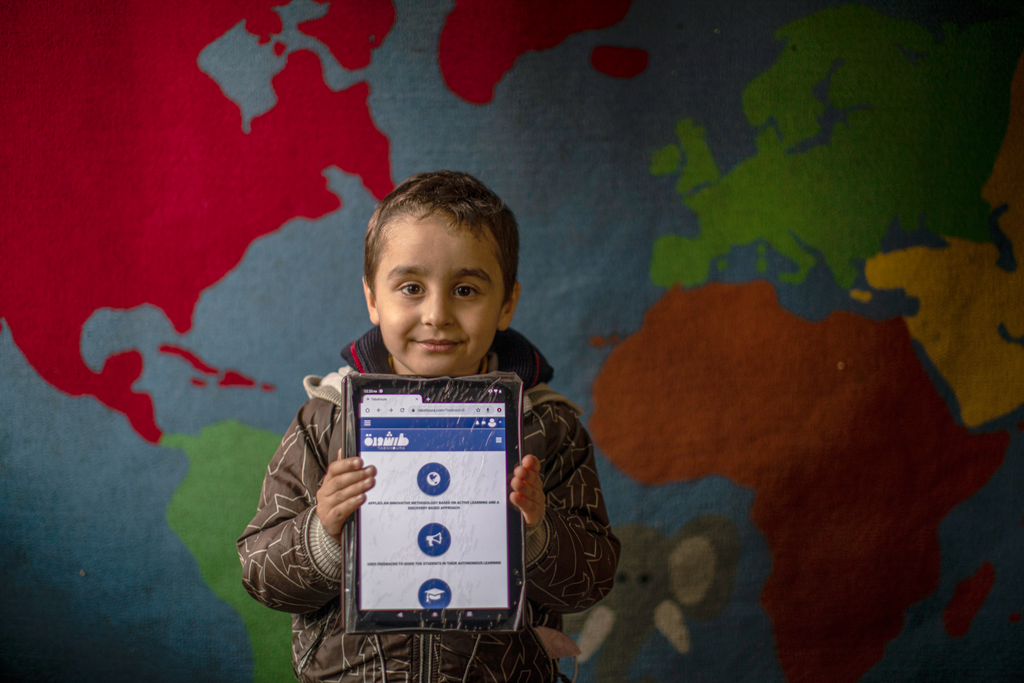
Youngest children are slipping through the cracks in emergencies
Early childhood development, Education in emergencies
A new report out yesterday by children’s charity Theirworld highlights the particular threats faced by the youngest children in conflict and emergency situations and calls for Safe Spaces to be made available for all babies, caregivers and young children in crisis.
Children living in crisis situations are vulnerable to all manner of harm – from physical injury or death in armed conflict, to psychological trauma, lack of education, recruitment into fighting, trafficking, child labour, child marriage etc.
The youngest children face compounding vulnerabilities not only from the immediate suffering in crisis contexts but also the long-term negative impacts on their development. Malnutrition, lack of cognitive stimulation and toxic stress can present immense barriers for the youngest children as they grow, recover and develop.
The provision of education services in humanitarian emergencies is bleak, this we know. Positive steps have been taken – especially in the past year – to reverse this situation, such as the launch of the highly-anticipated Education Cannot Wait Fund for education in emergencies and the work of the Education Commission who released their report two days ago, The Learning Generation: Investing in education for a changing world.
This is progress and yet we are all painfully aware that it is only the beginning in a broader shift needed in humanitarian response to place a high priority on the provision of schooling to children living in conflict, natural disasters or other emergencies – and the funding to match the need is still a long way off.
Among these new efforts for children in emergencies, it is crucial that the needs of the youngest children are not overlooked.
In the current humanitarian response system, efforts to meet the physical needs of children aged zero to five are commendable – both the nutrition and the health sectors consistently target programmes to prevent malnutrition, ensure vaccination and provide safe pregnancy and childbirth resources.
An early childhood development programme at Kibera in Kenya Picture: Adriane Ohanesian
However, the non-physical needs of the youngest are noticeably missing from other areas of emergency response, particularly in the education and protection sectors.
The report notes that more than 60% of education sector appeals do not include early learning targets for the youngest children.
While protection sector plans tend to consistently identify “children” as a vulnerable group, this includes everyone below the age of 18. Naturally, the needs of an 18-year-old in a conflict will look different and require different resources from those of a three-year-old.
Even a protection measure as seemingly simple as ensuring that all displaced children receive a birth certificate can have long-term impacts on their abilities to access social services and the justice system throughout the rest of their lives.
SAFE SPACES: Read about the report
SAFE SPACES: Protecting babies and toddlers from toxic stress
SAFE SPACES: Breast milk is first line of protection
While the humanitarian system has clearly recognised and attempted to provide for the physical health and nutrition needs of the youngest children in emergencies, their cognitive and psychosocial needs are not being targeted.
Anything resembling a “whole child” approach to the needs of the youngest children that integrates both physical protection, health, nutrition, psychosocial care to process trauma, early learning and caregiver support is absent in current humanitarian response plans.
While multi-sectoral approaches are called for in nearly all humanitarian plans, almost nowhere does this appear to extend to the holistic needs of the youngest children.
The way the international community responds in emergencies must continue its shift from merely trying to ensure that children survive, to providing a comprehensive response that will allow them to recover and thrive.
Providing Safe Spaces is a critical step in this response for meeting the needs of the youngest children, babies and their caregivers and ensuring that they are able to have the best start for their future, even when born in the midst of a crisis.
More news

